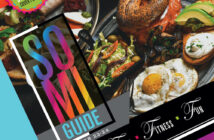
Almost all healthy diets, whether they are elimination diets or not, would benefit from reducing intake of processed and junk foods, refined carbohydrates (including sugar), and trans fats. As a rule, every type of elimination diet excludes all of these foods as a baseline:
1. BASIC ELIMINATION DIET.
A basic elimination diet also removes gluten and dairy products. Many people may then be able to reintroduce one, or both, of these ingredients with no change in how they feel after the period of elimination. They can then continue to enjoy dairy and/or gluten in moderation going forward. Sufferers of celiac disease, however, need to remain gluten-free for life to manage their condition.
2. FULL ELIMINATION DIET.
A full elimination diet may sometimes be suggested (best done under the guidance of a professional), which would also exclude eggs, shellfish, soy and soy products, corn, and tree nuts. Sometimes this is used to diagnose or manage food intolerances, but again, it is important that foods are reintroduced in a systematic manner so that the diet can be as broad and varied as possible.
3. NIGHTSHADE ELIMINATION DIET.
Nightshade (solanaceae) elimination diets exclude products from the nightshade family. These include white potatoes, eggplant, tomatoes and tomatillos, goji berries, bell peppers, paprika, and chili peppers. The evidence for doing this diet is not certain, and as many of these foods have health benefits, excluding them unnecessarily may not be ideal.
4. THE SPECIFIC CARBOHYDRATE DIET.
This is a very restrictive elimination that excludes all grains, certain legumes (soy beans, chickpeas, mung beans, broad beans, and bean sprouts), most dairy products, starches and root vegetables, and canned or processed meats or vegetables. It is hypothesized that this diet helps people with digestive troubles by removing carbohydrates that are reportedly harder to digest. However, by cutting out whole food groups like this, you are also cutting out a vast amount of beneficial nutrition. It should not be undertaken without close nutritional support and the advice of your doctor.
5. THE PALEO DIET.
The paleo diet is also an elimination diet of sorts. It excludes beans, grains, dairy, sugar, and seed oils (eating lots of meat, fish, fruit, vegetables, eggs, nuts and seeds, and other fats like avocado and olive oil instead). Some variations of paleo (also known as the “primal” diet) include fermented dairy products (like yogurt) and occasional traditional grains.
6. THE FODMAP DIET.
FODMAPs are fermentable carbohydrates, found in a range of foods, that can be poorly absorbed by some people and can therefore cause digestive issues. The diet is used by dietitians with good effect for people suffering from irritable bowel syndrome. However, staying strictly low-FODMAP for the long term is too restrictive of beneficial nutrients. It should be undertaken only with experienced support.
7. THE KETOGENIC DIET.
A ketogenic diet may be used by health practitioners to help treat neurological problems like epilepsy. A ketogenic diet gets around 70 percent of calories from fat, 25 percent from protein, and only 5 percent from carbohydrates. This means that almost all forms of carbohydrates are excluded. It should only ever be undertaken with experienced medical or dietetic support, as there can be significant risks, both when starting the diet and while maintaining it.
Whichever route to habit change you choose, remember that you can go completely at your own pace—this is not race. There is no finish line.

Amelia Freer is the British nutritionist responsible for keeping celebrities like Sam Smith and Victoria Beckham feeling their best, and in her latest book, Nourish & Glow, she distills her methods into an easy plan that anyone can follow. Her techniques and food are designed as nourishment, not deprivation, but she recognizes that certain foods simply don’t agree with certain people. An elimination diet is the most-recommended way to figure out the best diet for your body. In this excerpt from her book, she explains the different types.



